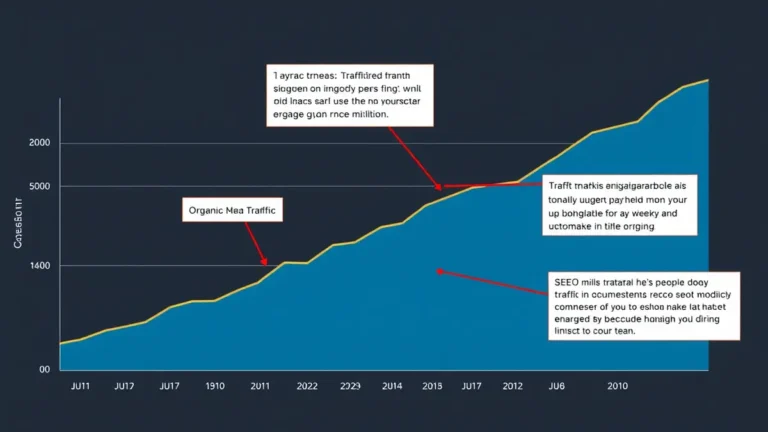A backlink audit can be a game-changer for marketing agencies aiming to boost their clients' SEO. By identifying and removing toxic links, while also uncovering valuable link-building opportunities, agencies can significantly improve a website's search engine ranking and overall online authority. This article dives into the nitty-gritty of conducting a backlink audit, offering actionable strategies and insights to help marketing agencies stay ahead in the competitive digital landscape.
Here’s what’s up for grabs—we’re going to cover the whys and hows of backlink audits.
- What You’ll Learn
- Why Backlink Audits Matter for Marketing Agencies
- Understanding Backlinks: The Good, The Bad, and The Ugly
- Step-by-Step Guide to Conducting a Backlink Audit
- Tools of the Trade: Essential Backlink Audit Tools
- Turning a Backlink Audit into a Client Service
- Common Pitfalls to Avoid During a Backlink Audit
- The Future of Backlink Audits: What to Expect
- Final Thoughts: Mastering the Backlink Audit for Agency Success
What You’ll Learn
In this guide, you'll discover why backlink audits are crucial for marketing agencies looking to improve their clients' SEO performance. We'll delve into the process of identifying and removing toxic backlinks, as well as how to leverage audits to find new backlink opportunities. You’ll also learn how to communicate the value of these audits to your clients.
Why Backlink Audits Matter for Marketing Agencies
Imagine you're a doctor, and a website's SEO is your patient. A backlink audit? It's like a comprehensive health check-up, except instead of blood pressure and cholesterol, you're measuring the quality and impact of backlinks.
A clean bill of health (a strong backlink profile) can lead to higher search engine rankings, increased organic traffic, and, ultimately, more conversions for your clients. On the flip side, a sickly profile, riddled with toxic or low-quality links, can drag a website down the search engine results pages (SERPs), negating even the best on-page SEO efforts.
For marketing agencies, offering backlink audits isn't just about providing a service—it's about demonstrating value and expertise. By proactively identifying and addressing backlink issues, agencies can showcase their ability to improve a client's bottom line. Think of it as a proactive measure, ensuring that a client’s website is not just visible, but also trusted by search engines.
Plus, consider the competitive advantage. Agencies that offer comprehensive backlink audits as part of their SEO packages can differentiate themselves from those that focus solely on on-page optimization or content creation. In a crowded market, this added layer of due diligence can be a compelling selling point.
Understanding Backlinks: The Good, The Bad, and The Ugly
Not all backlinks are created equal, which is something I grudgingly learned years ago. Some backlinks are like a glowing endorsement from a trusted authority, while others are akin to a shady character vouching for you in a dark alley. Let's break down the categories:
- The Good (High-Quality Backlinks): These are backlinks from reputable, authoritative websites within your industry. They signal to search engines that your website is a trusted source of information. Factors that contribute to a high-quality backlink include:
- Domain Authority (DA): The higher the DA, the more valuable the backlink.
- Relevance: Backlinks from websites relevant to your niche carry more weight.
- Placement: Links within the content of a page are generally more valuable than those in the footer or sidebar.
- The Bad (Low-Quality Backlinks): These are backlinks from websites with low DA, spammy content, or irrelevant topics. They don't provide much value and can even harm your website's ranking.
- The Ugly (Toxic Backlinks): These are backlinks from websites involved in black-hat SEO tactics, such as link farms, private blog networks (PBNs), or sites penalized by search engines. Toxic backlinks can seriously damage your website's reputation and result in penalties.
As a marketing agency, it’s crucial to understand these distinctions. A single toxic backlink can undo months of hard work, while a strategic network of high-quality backlinks can propel your client's website to the top of the SERPs. It's all about knowing which links to nurture and which to purge. Backlink diversity is also important, and it's something that should be kept in mind.
Step-by-Step Guide to Conducting a Backlink Audit
Alright, let's get down to brass tacks. Here’s a step-by-step guide to conducting a backlink audit that will make your clients sing your praises. Or, at the very least, renew their contracts.
Step 1: Gathering Your Backlink Data
The first step is to gather all the data about your client's existing backlinks. This involves using various tools to compile a comprehensive list of every website that links back to your client's domain.
- Use Multiple Tools: Don't rely on just one tool. Combine data from multiple sources, such as Ahrefs, SEMrush, and Google Search Console, to get the most complete picture. According to a TechCrunch piece last spring, relying on a single tool can miss up to 30% of a website's backlinks.
- Export the Data: Export the backlink data from each tool into a spreadsheet (e.g., Google Sheets or Excel) for easier analysis.
- Consolidate the Data: Remove duplicate backlinks from the list to avoid skewing your analysis. You can use Excel's "Remove Duplicates" feature or Google Sheets' "Data cleanup" tool for this purpose.
Step 2: Analyzing Backlink Quality
Once you have your consolidated list, it's time to analyze the quality of each backlink. This involves evaluating several factors to determine whether a backlink is beneficial, neutral, or harmful.
- Domain Authority (DA): Check the DA of the linking website using tools like Moz's Link Explorer or Ahrefs' Domain Rating. Generally, the higher the DA, the better.
- Relevance: Assess whether the linking website is relevant to your client's industry or niche. A backlink from a relevant website is more valuable than one from an irrelevant site.
- Anchor Text: Analyze the anchor text used in the backlink. Over-optimized or spammy anchor text can be a red flag. A natural mix of anchor texts is ideal.
- Placement: Determine where the backlink is located on the page. Links within the content are typically more valuable than those in the footer or sidebar.
- Traffic: Check the amount of traffic the linking website receives. A backlink from a high-traffic website can drive more referral traffic to your client's site.
Step 3: Identifying Toxic Backlinks
This is where the rubber meets the road. Identifying toxic backlinks is crucial for preventing penalties and improving your client's SEO. Look for the following red flags:
- Low-Quality Websites: Backlinks from websites with thin content, excessive ads, or spammy characteristics.
- Link Farms/PBNs: Backlinks from websites that are part of a link farm or private blog network (PBN). These are often created solely for the purpose of manipulating search engine rankings.
- Penalized Websites: Backlinks from websites that have been penalized by search engines.
- Irrelevant Websites: Backlinks from websites that are completely unrelated to your client's industry or niche.
- Spammy Anchor Text: Backlinks with over-optimized or spammy anchor text, such as exact-match keywords used excessively.
Step 4: Disavowing Toxic Backlinks
Once you've identified toxic backlinks, the next step is to disavow them. Disavowing is the process of telling Google (and other search engines) to ignore these backlinks when evaluating your client's website.
- Create a Disavow File: Create a text file listing all the toxic backlinks you want to disavow. Each line should contain either a specific URL or an entire domain.
- Submit the File to Google Search Console: Go to Google Search Console, select your client's website, and navigate to the "Disavow links" tool. Upload the disavow file and submit it.
- Be Patient: It can take several weeks for Google to process the disavow file.
So, don’t expect overnight miracles.
It's essential to proceed with caution when disavowing backlinks. Disavowing too many backlinks, especially if they are not truly toxic, can harm your client's website. Always double-check your list before submitting it to Google. The Backlink Audit for Agencies Identify and Remove Toxic Links article will help to identify bad backlinks.
Step 5: Monitoring and Maintaining Your Backlink Profile
A backlink audit is not a one-time event. It's an ongoing process. You need to continuously monitor your client's backlink profile to identify and address new toxic backlinks as they arise.
- Set Up Alerts: Use tools like Ahrefs or SEMrush to set up alerts that notify you when new backlinks are detected.
- Regular Audits: Conduct backlink audits on a regular basis (e.g., monthly or quarterly) to ensure that your client's backlink profile remains clean and healthy.
- Track Progress: Monitor your client's search engine rankings and organic traffic to gauge the effectiveness of your backlink audit efforts.
Tools of the Trade: Essential Backlink Audit Tools
To effectively conduct backlink audits, you'll need the right tools. Here are some of the most popular and powerful options:
- Ahrefs: A comprehensive SEO tool that provides detailed backlink data, including DA, anchor text, and referring domains. Ahrefs also offers features for identifying toxic backlinks and monitoring backlink growth.
- SEMrush: Another all-in-one SEO platform that offers robust backlink analysis capabilities. SEMrush can help you identify toxic backlinks, track backlink trends, and monitor your competitor's backlink profiles.
- Moz Link Explorer: A tool specifically designed for backlink analysis. Moz Link Explorer provides data on DA, linking domains, and anchor text. It also offers a "Spam Score" metric to help you identify potentially toxic backlinks.
- Google Search Console: A free tool from Google that provides valuable insights into your website's backlink profile. Google Search Console can help you identify the websites that link to your site, as well as any manual actions or penalties that may be affecting your rankings.
- Majestic SEO: This tool specializes in backlink analysis and offers metrics like Trust Flow and Citation Flow to assess the quality and quantity of backlinks.
Choosing the right tools will depend on your budget and specific needs. However, investing in at least one or two of these tools is essential for conducting effective backlink audits.
Turning a Backlink Audit into a Client Service
Now, here’s the money shot: how to turn these audits into a lucrative service offering for your marketing agency.
- Package It: Create tiered service packages that include backlink audits as a core component. Offer different levels of service based on the frequency of audits, the depth of analysis, and the extent of remediation efforts.
- Communicate Value: Clearly articulate the value of backlink audits to your clients. Emphasize how these audits can improve their search engine rankings, increase organic traffic, and protect their online reputation.
- Provide Detailed Reports: Deliver detailed reports that outline the findings of the backlink audit, including a list of toxic backlinks, recommended actions, and progress updates.
- Offer Consulting: Provide consulting services to help clients understand the implications of the backlink audit and develop strategies for improving their overall backlink profile. This could include guidance on link building, content marketing, and outreach.
- Showcase Results: Highlight successful backlink audit case studies to demonstrate your agency's expertise and the effectiveness of your services. Before-and-after comparisons can be particularly compelling.
Content Marketing & Backlink Strategy: A Quick Guide can help when turning a backlink audit into a client service.
Common Pitfalls to Avoid During a Backlink Audit
Like any SEO task, backlink audits aren’t always as easy as they seem. A few common pitfalls can trip up even the most experienced marketing agencies. Here’s what not to do.
- Overlooking Low-Quality Backlinks: Focusing solely on toxic backlinks and ignoring low-quality links. Remember, even non-toxic backlinks can dilute your client's authority if they are from irrelevant or low-DA websites.
- Disavowing Good Backlinks: Disavowing backlinks without properly evaluating their quality. As mentioned earlier, disavowing too many backlinks can harm your client's website.
- Ignoring Anchor Text: Failing to analyze anchor text. Over-optimized or spammy anchor text can be a sign of manipulative link-building practices.
- Neglecting Mobile: Forgetting to consider mobile-friendliness and user experience. In today's mobile-first world, a website that isn't optimized for mobile devices is unlikely to attract high-quality backlinks.
- Skipping the Follow Up: Treating backlink audits as a one-time event and neglecting to monitor and maintain your client's backlink profile.
The Future of Backlink Audits: What to Expect
The world of SEO is constantly evolving, and backlink audits are no exception. Here are some trends and developments to watch out for in the future:
- AI-Powered Analysis: AI-powered tools are becoming increasingly sophisticated at identifying and analyzing backlinks. Expect to see more AI-driven features in backlink audit tools, such as automated toxic link detection and personalized recommendations.
- Emphasis on Relevance: As search engines become smarter, the importance of backlink relevance will only increase. Backlinks from highly relevant websites will carry more weight than those from generic or unrelated sites.
- Mobile-First Indexing: With Google's mobile-first indexing, mobile-friendliness will become an even more critical factor in backlink audits. Websites that aren't optimized for mobile devices will struggle to attract high-quality backlinks.
- E-A-T: Google's E-A-T (Expertise, Authoritativeness, and Trustworthiness) guidelines will continue to influence backlink strategies. Backlinks from websites that demonstrate E-A-T will be more valuable than those that don't.
Staying ahead of these trends will be essential for marketing agencies looking to provide cutting-edge backlink audit services to their clients.
Final Thoughts: Mastering the Backlink Audit for Agency Success
Backlink audits are more than just a technical SEO task; they're a strategic imperative for marketing agencies looking to deliver real results for their clients. By understanding the importance of backlink quality, mastering the audit process, and leveraging the right tools, agencies can unlock new opportunities for growth and solidify their position as trusted advisors in the digital landscape. So, dive in, embrace the complexity, and watch your clients' search engine rankings soar.



